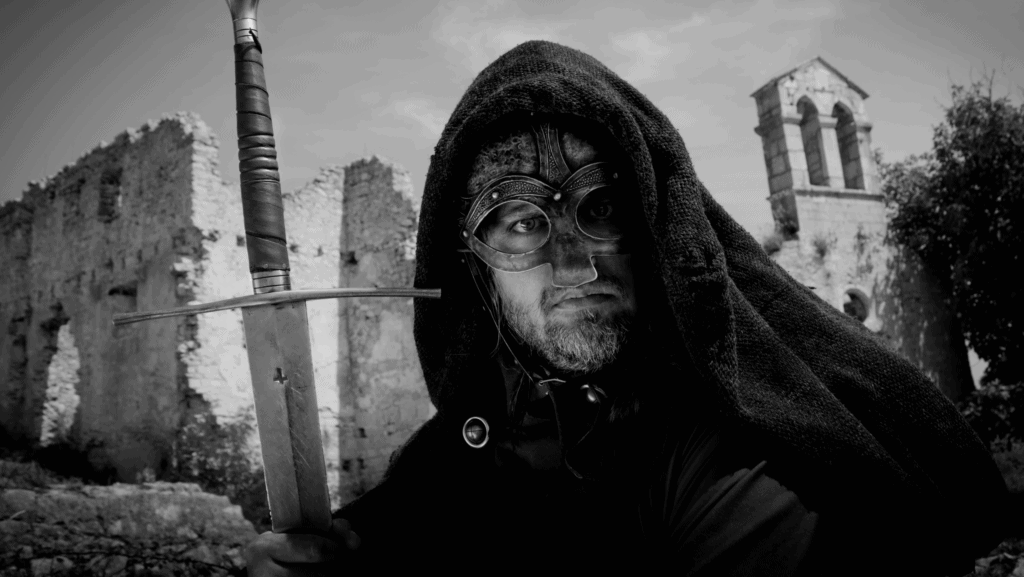Introduction to the Confraternity Black Templars
The subject of the Confraternity Black Templars is a complicated one, and most of the non-academic world will have no understanding, let alone knowledge, of the existence of these mysterious Templars. Who were they, and who were the Knights Templar? Within this article, we will discuss and explain a little more regarding The Order of Knights Templar and its Confraternity, Black Templars. As we read in part 1 (Discover The Knights Templar & The Confraternity Templars), we should have a basic understanding of what it was to be an actual Knight Templar.
We will now move on to The Confraternity Black Templars and explain their rules and associations with The Knights Templars. The Latin rule, with the French rule of the Temple and the retraits (Hierarchical Statutes), is the indispensable basis for understanding this Order of the Medieval Temple and its spirituality.
The Confraternity Black Templars are never mentioned in most of the pseudo-historical literature known as “Templar” by its bestselling writers, whether in France, across the Channel, or across the Atlantic; these non-academic writers have a poor understanding of the historical and expert literature on this subject hence, makes the reader of such low-level books, avoid to see the vast difference between the “Order of the Medieval Temple” and all of its “Neo-Templar” descendants today.
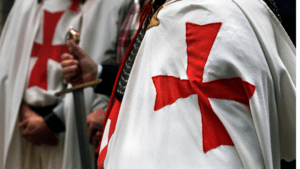
Confraternity Black Templars & Statutes and the Rule
The rule of the Temple in Latin or French was so important to the Templars that it should have reached us continuously from that medieval period through the “Templar Knights” and the so-called “Templar” Orders, who call themselves descendants of the “Poor Knights of Christ” since its translation was indispensable in the houses of the Temple and was read to the postulants at the entrance to the Temple.
During the so-called trials of the Templars in 1307, it is clear the brothers which were incarcerated and put on trial did not have any copies of the Rule of The Temple, neither in Latin nor french versions. It is known through reading expert authors such as Simonetta Cerrini, Alain Demurger, and Malcolm Barber that there could be no Templar Order without The Rule. See Templarkey part 1 of this series of articles” (the rule was attributed to Bernard de Clairvaux, and during the council of Troys 1128, it was implemented).
We know that the Rule of The Temple was written firstly in Latin and then later translated into French due to many of the Templar brothers being unable to read or write in Latin (it is more than likely Jacques de Molay himself could not read or write in Latin; hence some writers quote him being illiterate).
It is also well known that Phillipe le Bel was a high intellectual with a great understanding of not only the law but all manner of skills used for political manipulation so in regards to these facts, any Templar, whether Knight Templars or Confraternity Black Templars, they stood little or no chance to escape his wishes. We have to remember there was also one of the biggest power battles of all modern times, between King Philip IV of France (Phillipe le Bel) and the Pope (Boniface VIII), which carried on with his successor Pope Clement V (Raymond Bertrand de Goth).
This intellectual French political powerhouse was raised to supreme heights by the King employing the grand advocatus diaboli Guillaume de Nogaret (councilor and keeper of the seal to Philip IV of France), who no man could outwit in the law. The Pope at this time wished to either subdue the Templars into merging with the Hospitaller Knights (Hospital of Saint John of Jerusalem) or disband the order.
The first thing to take away from the Templars would have been the Statutes and the Rule, if we understand the meaning of the rule of The Temple, as these rules and statutes would have made it possible to prove their innocence during the trial.
The content of these rules is not even mentioned or known in the proceedings during the trial of Temple, except by that of the cleric, Brother Bartholomew of Turri, chaplain at Mas Deu, who presented to the Bishop the Book of Statutes and The Rule, and his reply was similar to twenty-five other Templars.
He believed firmly and in no way doubted that the Lord Jesus Christ was and will be the Word of God the Father, and had assumed human nature and proceeded from the sacred womb of the most holy Mary forever the Virgin, his mother, in whom he was conceived by the Holy Spirit and without male insemination, and suffered not for his sins, but for ours, and had arisen from death on the third day [1].
“We assume that Phillipe le Bel in his searches did everything possible to conceal the Statutes and The Rule” due to it being proof that the Templars could not be heretical and, in a legal battle, the mention of the Statutes and the Rule of the Temple had to be avoided at all cost.
The Accused Knights or other Templars, “which included the Confraternity Black Templars” with knowledge of trial procedures, could have invoked the statutes and the rule as proof of their defense, but this was not the case as it seems in the inquisitorial procedure hatched by Phillipe le Bel. It is known that only the hierarchy of the Temple could have in their possession a full text of the rule and statutes, so if Jacques de Molay was arrested without having a copy, he could have called upon one, although sadly, Jacques de Molay did not have the skills needed to win against Phillipe le Bel within the battlefield of his and his Templar Brothers trial.
The Knights Templar or “Templars” would have needed the legal finesse of the debates in an inquisitorial court, although sadly, as we have read, this was not the case. It is also only within recent years that these statutes and rules have become far more known to the outside world, and it was only through research in archives such as the Florentine library of the Corsini Prince’s [2], preserved in Rome, in Paris in the Royal Library or in Dijon that gave us access in 1840 to these Statutes and the Rules, via Maillard de Chambrure.
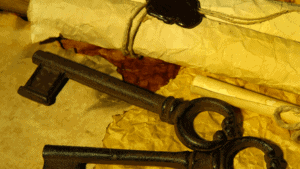
The Rule should be known to all interested in the subject of the “Templars,” and although never really gone, very few non-academics add it to their books or articles. Given the knowledge we now have of the various archives where it resides and books where it is explained in-depth, there should be no best-selling books or popular documentaries that get their facts about the world of the Templars so wrong.
Before its publication in 1840, no “alleged” descendant of the Temple could mention it as evidence of the continuation of the Temple held by him or his family. This is what separates it from the search for historical criticism since no documents are provided for the examination of academics and scientists recognized in the medieval history of the Order of the Temple.
Let us hope that one day these “secret” documents will be freely reviewed and offered to the “historical” critic. Meanwhile, history and myths rub shoulders, and readers searching for sensationalism within books and high-budget films turn away from the “Statutes and Rules” which they should study seriously and thus then “respect the memory of The Templars” same goes for those who claim to have a Templar succession, it is a duty of remembrance to The Templars.
The denial of the Statutes and the Rule of the Templars continues today to allow itself all elucidations and pseudo theories about the Temple; we make the Knights Templar and their brothers and sisters die again many times, as in the trial of The Templars, by promoting a partisan “heretic” vision of the latter, giving a reason to Phillipe le Bel representing the fight against heretics and, of the purity of the Church of Gaul, and the extension of the Kingdom of France, to have burned them.
The hatred against the Roman Catholic Church that seems to spread all the fiction literature on “The Order of the Temple” forgets that the true condemnation of the Temple comes from Phillipe le Bel, as well as internal failures and dissensions throughout the history of “The Order of the Temple.” Political visions and feudal and vassal connections are quickly set aside in all this literature in favor of the “wonderful,” the “myth” seller and purveyor of “blind” disciples. Money does not go into the restoration of the Churches of the Order of the Temple but “elsewhere,” which is useful for spotting “the merchants of the Temple.”

The complexity of the Templar world of the Poor Knighthood of Christ and of the Temple of Solomon is seen in the French rule, although more in the retraits (Hierarchical Statutes) about their organization and way of living. The temple rule in Article 17 of The Rule Of The Templars is noticeably clear, those who do not wear the “White” are not “knights” and have not taken the “monastic vows,” which imply chastity.
We invite you to re-read what a Templar Knight of the Order of the Poor Knights of Christ and the Temple of Jerusalem in Templarkey article 1 of this series of articles (Discover The Knights Templar & The Confraternity Templars). It implies that not all brothers are “Templar Knights” but are given the generic term “Templar.”
The term “Templar” is used in various ways and helps to maintain confusion in the minds of readers. This confusion allowed the sale of the “Templars” and the confusion of all the “Orders” into descendants of the “secrets of the Templars.” Thus, the “Templars” passed on their “secrets” to the various other religious or chivalry orders that we will find in Spain, Portugal, England, Scotland, Germany, etc. We also see in the Rosicrucian Tradition, such as The Elder Brothers of The Rose Croix, Joséphin Péladans Rosy Croix Order, etc., and various Masonic orders inheriting such secrets.
These secrets include “Templars” baring secrets about the descendants of Jesus and Mary Magdalene, and as that “Revelation,” they had teachings on sacred sexuality. The “Templars” are custodians of the “secrets” of Alchemy, which is used to make gold or more spiritual alchemy as opposed to it. The Templars also discovered America, etc. It is this “Black Order” Confraternity Black Templars, which are holding the “secrets” that supposedly the Knights Templar did not possess, which we will now discover within this article.
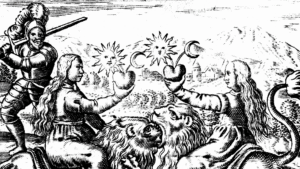
Confraternity Black Templars & the Bauceant
We will now discuss the Black Colour of the Bauceant (Templar Flag) and the non-Knights Templars (Confraternity Black Templars). The flag of Poor Knighthood of Christ and of the Temple of Solomon was originally made of two colors, white and black, which reminds us of the two worlds of the “Templars.” Wearing the color “black” is a reminder that these “Templars” are part of the world and of darkness.
Apart from the (religious) chaplains, these “Templars” are “laypeople.” They cannot reach God or obtain eternal peace. The Latin rule is clear that the “brothers of the Temple” are the Knights Templars; therefore, they were the only ones allowed to wear the white cloak, unlike the Confraternity Black Templars.
We command that all the brother’s habits should always be of one color, that is, white or black or brown (…) no-one who does not belong to the aforementioned Knights of Christ is allowed to have a white cloak so that those who have abandoned the life of darkness will recognize each other’s as being reconciled to the creator by the sign of the white habits which signifies purity and complete chastity.
Chastity is certitude of heart and healthiness of body. For if any brother does not take the vow of chastity, he cannot come to eternal rest nor see God, by the promise of the apostle who said: Pacem sectamini cum omnibus et castimoniam sine qua nemo Deum videbit. That is to say: ‘Strive to bring peace to all, keep chaste, without which no one can see God.’
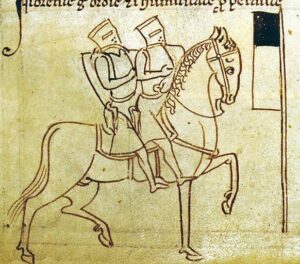
This separation in clothing and categories had already happened before the temple rule was written, the introduction of “false brothers” who would be “married” or “other.” These “others” referred to those who wanted to join the Temple by “interests,” which, according to the Rule, gave rise to “various scandals” within the Order.
These clarifications in the rule put an end to the assumptions that the “Templar Knights” may have returned from the East with “sexuality as a sacrament” for couples or for themselves (we will not examine within this particular article the accusations of the trial of the Templars that serious historical research allows us to now demystify). The lack of interest in the wealth of a “Temple Knight” is not a positive point for the assumptions of the Order of the Temple, which holds alchemical secrets in connection with the manufacture of a vulgar “gold.”
The interest in a “Templar treasure “for which any “Templar knight” following the rule was to have nothing but disdain. The Count of Champagne entered the Order and renounced his wealth according to the three main rules required, and it was known by the two major categories, the “Templar Knights” wearing the “white dress,” who, by their physical and moral chastity will be able to access paradise and the other “Templars” who were condemned to the darkness and wore “the black dress” (Confraternity Black Templars.)
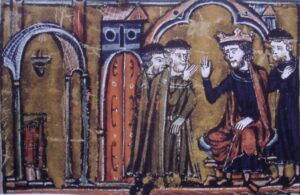
Sergeants or “Servants” of the Confraternity Black Templars
This “black” clothing color is assigned to the “sergeants” class (Confraternity Black Templars) which makes you think that from that time, they were the only other armed personnel serving the Knights. Sergeant: in Latin comes from servientem which means “the one who is in the service of.” It is only belatedly that he will appoint a man-at-arms or an officer of justice.
The famulus is someone who lends service to the Temple, probably a military service, like the sergeant, brother of the armed Temple, who is nevertheless not a knight, and which is translated as a sergeant. The term “Servient” would become the category of the military or “sergeants” designated at that time of the Temple, all the people who will serve the Temple, e.g., the Knights of Christ.
These sections will include many categories which are lost to us in this present time, not living in this medieval organization and its many categories of “servants” of the Temple. The members of this “Black Order” (Confraternity Black Templars) do not bear the name “brother“; only The Knights Templar called themselves Brothers, even if these Black Templars are eventually called the other brothers of the Temple (Confraternity Black Templars).
They were the “servants” who helped to continue the protection of pilgrims in the Holy Land by the knights of Christ, and the whole organization used for the machine of war and colonization for the Latin States, fighting against the Saracens, that was to become the “Order of the Temple.” This Order, whose founders had first insisted on its military significance when it was created, detached itself from the Holy Sepulcher and the Hospital.
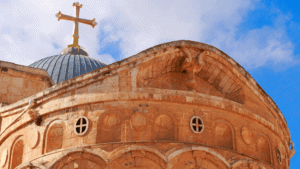
The rule tends to describe the other brothers, that is, the sergeant brothers, the squires, or the men-at-arms who lent their service to the Temple for a specified period, by the words serviens, cliens, famulus, armiger, translated into ancient French by the words serergant/serjant/sergent or escuier [3].
Here we see the broad meaning of “serviens” which relates to those who are in the “service” of the Knight, the squire-armiger-escuier. These different denominations often overlap to refer to these “brothers” or “templars” who, for knights, are not “knight brothers” but servants, members of the “family” of the (Templars Confraternity Black Templars), who connect with them to reap spiritual or material benefits in exchange for their “service.” They also come here to do their military service. The famulus is someone who lends service to the Temple, probably a military service, like the sergeant, brother of the armed Temple, who is nevertheless not a knight, and which is translated as a sergeant.
We could see it as meaning with the modern word “customer” and “clientelism.” The Cliens is the brother of the Temple who is not knighted. Let us look at these different members of the “Templar” family, this Order wearing the “black” coat (Confraternity Black Templars).
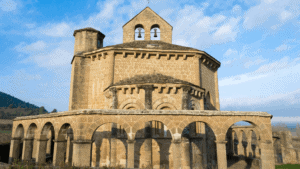
- The “donators” or “donates” of the Temple (donnés or donats) in French: The Latin rule speaks of famuli or famili, the laity, “those living among the monk’s knights without being confused with them.” The “donate” [4]. In the purest tradition, which is the traditio animae and corporis, was done by a double contract, giving his own person and his property. This has a penitential purpose of annulling his faults and his own, but with a more down-to-earth reason which is to be certain of being housed and caring for old age or cases of illness and misery. The penitential character is in line with socio-economic concerns. The Donat gives itself to God, to St. Mary, and to the Temple, but a commitment to obedience to the temple brethren is rare. It is a question of participating in the “benefits” of the Temple House to which they are committed. This tradition of “donate” is found at the very creation of the Order of the Temple and joins the “Oblates” of the Order of St. Benoit [5]. Two noble founding knights, then nine associates, then twenty-five were given various conditions. See Simonetta Cerrini. The concept of “donate,” which is complex (see the reference document), includes various categories of traditio and stages of the “perfect” life – which, if the goal is achieved, he becomes that of the Knight Templar with the white coat. They can be not included in the complexity and details of the donation contracts, these simplify thus:
- The “associate” brothers, who are lay knights hired for a fixed period, a war campaign, a crusade, or a military service, are the Fratres ad terminum (secular knights who serve for a fixed term) (Article 66 and 65).
- The married brothers, Fratres conjugal or Fratres coniugati (Article 69), are resident “donats” but do not remain in the same house as the knights of Christ who took the vow of chastity. These married “false brothers” are, in fact, secular knights who stay in the mundane world, who came to the Temple to atone for wrongdoing or were recruited for a period, and then returned to their lives in the world. The need for knights meant that the Order had accepted married secular knights.
- Sisters of The Temple: The Templars, from the beginning, opened order to women; it was not until 1129 that the Rule abolished their presence. But despite the ban, we know that in Europe, and in Aragon in particular – as in the example of Ermengarde d’Oluja, commander of Rourrel-Barberà – there were various female Templar convents and many Sisters of the Temple [6]. A path seems to be traced from which the rule of the temple leaves it visible, mentioning the difficulties of this presence. The presence of women is easy to understand by the facts of the “donate,” inner or outer fraternities, and married lay knights. So there are confratress and consorores within the Temple. The division of labor also based on sex, similar to that of lavandière (laundress or washerwoman), also explains the presence of “women” also as a steward, described as “mothers.” The understanding of the Hospital structure could have been resumed, although the Order of the Temple put an end to it due to its primary vocation being that of combat.
- Fratres ad Succurendum were lay people who joined the Order only on their deathbeds because of their salvation [7]. They wear black because they repel the taking of vows.
See the example below to understand this way of life within “The Order.”
Thus, in 1133, the two brothers Aimeric and Guillaume-Xatbert of Barbaira give themselves body and soul to God and to the militia for the redemption of their parents and theirs (…) Twenty years later, they had not yet renounced the world as they made another pious donation to the Temple with their wives and children [8].
We can say that they were the ones who joined to serve, without binding themselves by vows, which meant not for all time, or who joined the Order on their deathbed because of the salvation by the concept of “communion of the saints” [9].
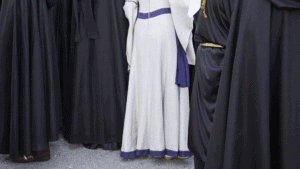
The Conclusion to the Confraternity Black Templars
As we have seen the study of the Confraternity Black Templars is not a simple one and needs a good understanding of The Rule Of The Temple to remotely perceive the world of the Knights Templar order and all of their Confraternity Black Templars, brothers, and sisters, etc.
Some more keywords regarding various people within the Temple Order are included with this conclusion; although the list is not endless, there are many more we have not included but shall feature in the next installment of this article.
1: The color black was worn by Sergeants/Confraternity Black Templars (army) who were divided simply into armed brothers who could fight as light cavalries such as squires, men of arms, and laypeople who joined the Order only on their deathbeds for the salvational prayers.
2: Working brothers who did the necessary work, who are all the people who will serve and manage for the temple their various assets and houses: forges, saddlers, agriculture, etc.
Milites ad Terminum were knights assigned to the Order as temporary fighting brothers.
Turkopolen served the Templars as mercenaries. They were Christians in the Holy Land who fought in the manner of the Saracens (that is to say, as light cavalry with a bow and arrow or as infantry).
Donators gave away themselves (and part of their possessions) to the Order. The donation usually came into force only in old age so that it can be seen as a kind of provision, also for the salvation of the soul.
Confratres were material patrons of the Order who profited above all from the reputation of the Order. They could also be women.
It was decided that Part 2 of this series was originally going to be in three parts, but due to the subject’s complexity will now have to have extra parts, with this part finishing within the next corresponding article in the series. The next part will also include the so-called Templar cathedral builders.
References
[1] Barber Malcolm, The Trial of the Templars (2006) Cambridge University Press pp. 236-236
[2] Biblioteca dell’Accademia Nazionale dei Lincei e Corsiniana.
[3] Ranks and Dignity in the Order of the Temple under the Rule, Simonetta Cerrini. (Elites and Military Orders in the Middle Ages, Caza Velaquez).
[4] Magnou Élisabeth. Oblature, classe chevaleresque et servage dans les maisons méridionales du temple au XIIe siècle. In: Annales du Midi : revue archéologique, historique et philologique de la France méridionale, Tome 73, N°56, 1961. pp. 377-397.
[5] Magnou Élisabeth. Oblature, classe chevaleresque et servage dans les maisons méridionales du temple au XIIe siècle. In: Annales du Midi : revue archéologique, historique et philologique de la France méridionale, Tome 73, N°56, 1961. pp. 382-383.
[6] Cerruni Simonetta, The Last Judgment of the Templars, Edition Flammarion, 2016, p.16.
[7] Minois Georges, Philippe le Bel, Editions Perrin, Paris,2014, p.472.
[8] Magnou Élisabeth. Oblature, classe chevaleresque et servage dans les maisons méridionales du temple au XIIe siècle. In: Annales du Midi : revue archéologique, historique et philologique de la France méridionale, Tome 73, N°56, 1961. P384.
[9] Pernoud Régine, « Chapitre II. Structures et vie quotidienne », dans : éd., Les Templiers. Paris cedex 14, Presses Universitaires de France, « Que sais-je ? », 2018, p. 11.
